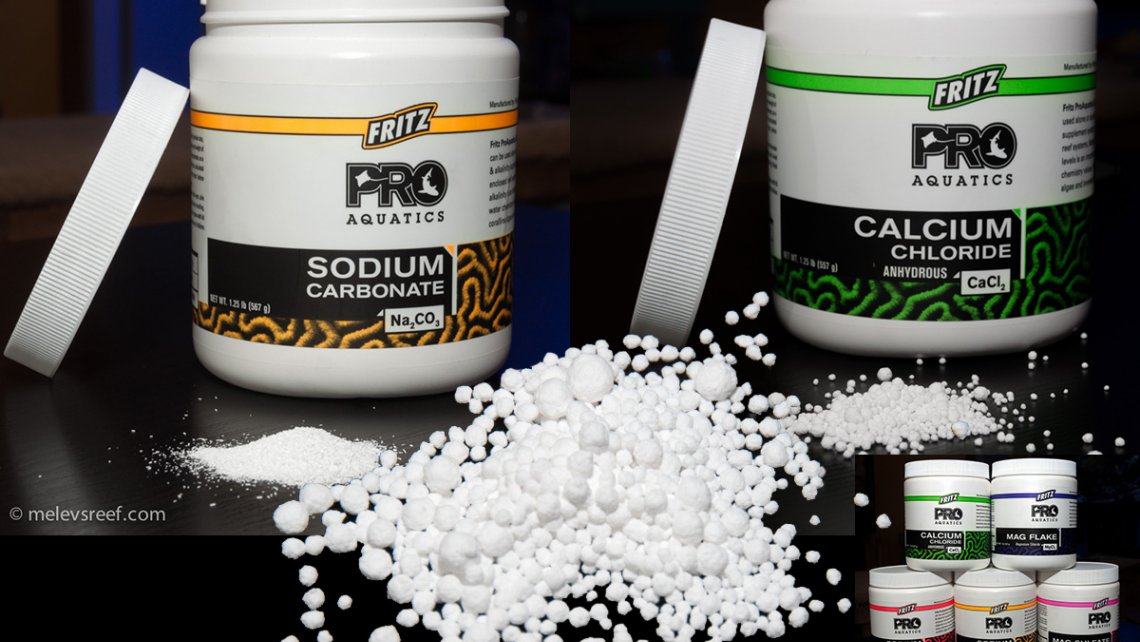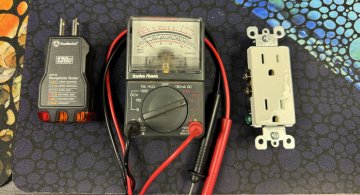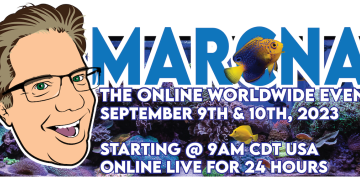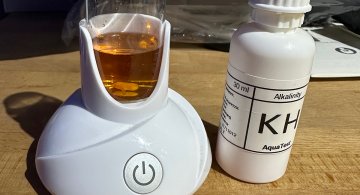The importance of hoarding
After making myself (literally) do all my water testing today on both systems, I'm quickly reminded why I prefer to only run one reef at a time. Those people that run multiple tanks or frag systems deserve heavy praise for being able to keep so many separate systems thriving. I noticed some bits of corals turning white in my reef, but I kept blaming it on shade rather than a water quality issue. Today, I ran through all the Elos test kits, twice since I have to measure the 400g reef as well as the 60g frag system.
I discovered that the alkalinity on my reef had dropped to about 7.5 dKH, which is a tad lower than I prefer to keep it. Usually it's around 9 dKH, or higher. You'd think I'd be more apt to test alkalinity more frequently since it is almost always the culprit when things go awry. Magnesium, on the other hand, is looking great at 1400ppm, something that has taken -- I don't know -- 10 months to raise where it belongs; I probably dosed 6, 7, or 8 gallons of Mg to my reef over that time period trying to get it up from 1200ppm. I'd mix up a gallon of solution and let it add to my tank every 8 hours (90ml at a time) until the container was empty, and then repeat a few weeks later. It's not a pressing element by any means, but I've learned many years ago it takes a lot to bring it up when it is depleted. For the time being, I won't need to dose that for a duration because it takes a decent amount of time for it to deminish. Perhaps I'll find that dosing 180ml once a week will suffice, but that's just a WAG at the time of this writing.
Back to the Alkalinity. The simplest solution when running a Calcium Reactor is to lower the melting point of the media. It was at pH 6.6, so I lowered it to 6.2 for now. The flow rate will remain at the constant trickle I've used for 13 years. And when more of the remaining media is consumed in the coming weeks, I'll replace that with some fresh Reborn calcium reactor media and raise the setpoint to pH 6.5 and test weekly.
The frag system was badly neglected. My dosing container had run dry in all three compartments and I needed to replenish them. The tank started losing some corals, and cyano began to take hold. I did clean out the triple compartment dosing reservoir and replenished alkalinity, calcium and magnesium solutions and made sure all three dosing pumps were dispensing properly. And for the past couple of weeks, that tank looked worse. LPS seemed unbothered, but SPS were all but gone. The fish seemed normal, and I was busy with a huge project for my work, and the system took a back seat.
About a week ago, it was clear I was going to have to clean out the tank of the cyano situation and that's when it dawned on me that I could do a video about treating the tank with RedCyano Rx. I've written articles about Chemi-Clean in the past, and have provided the proper steps when trying to erradicate cyanobacteria on the product page I sell from, but everyone loves to see a video these days. I let the tank fester more, and then filmed what it looked like.
By now I'm sure you are wondering why I entitled this blog the way I did above. And what about all that powdery stuff in the picture? After measuring all the testable elements in the frag system, I quickly discerned that I don't need any alkalinity or magnesium whatsoever for the next week or longer. For those of you that like numbers, alkalinity had risen to 18 dKH and magnesium measured 1450 ppm. Calcium on the other hand was crazy low at 200 ppm. I changed the dosage rate for calcium, doubling the amount being added every eight hours. The pH of this tank has been too high, but with that high alkalinity I'm not surprised. That number will come down in the next few days to the typical average I've come to expect.
It was then that I thought about physically dosing calcium to the frag tank and soda ash to the reef to correct the deficiencies now rather than letting this situation resolve itself over the course of days. I have all kinds of products on hand, including these jars by Fritz. Originally I wanted to offer these products in my shop as a way to mix up 1-gallon of solution at a time, but the jars don't contain the correct weight of powder necessary to do so. But when your tank is missing something, you can definitely follow the directions and start counting out teaspoons of these additives to hit those desired target numbers.
I had Sodium carbonate as well as Sodium bi-carbonate on hand. After double checking my memory with a quick google search, I used the Sodium carbonate (Soda Ash) to mix up enough power in a big cup of RO water to raise the 400g's alkalinity to 8.5 dKH. pH rose quickly from 8.05 to 8.42 initially, then dropped back down gradually for the evening. 8.4 isn't a risky number in a reef, and if anything the corals that weren't doing well likely were happy to get a boost of alk today.
Next I mixed up the Calcium chloride to raise Ca back up where it belonged, around 350 ppm. I only poured in half the solution in an area of high flow, and waited about six hours before adding the other half of that batch.
I did some other reef-related duties today, including cleaning three different skimmers and collected about 45g of RO/DI water for a big water change coming up for the 60g frag system currently being treated with RedCyano Rx. It was nice to work on my tanks today, and just feel like things are being cared for better... but I really must force myself to test weekly like clockwork to avoid such unpleasant surprises.
I'm glad that I save everything, even products that seem unlikely to be useful. These jars would normally be woefully small for my 400g reef and require that I have several of each type to actually accomplish anything, but if you hoard even the small stuff, it ends up being exactly what you need on a rainy day like today. :)
And that's why I recommend you hoard stuff too.
















